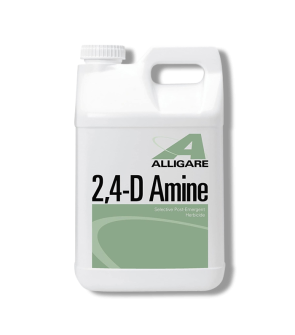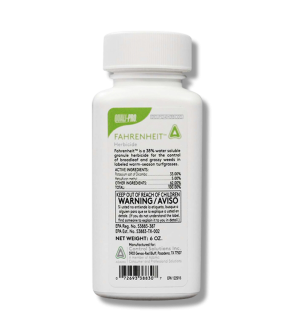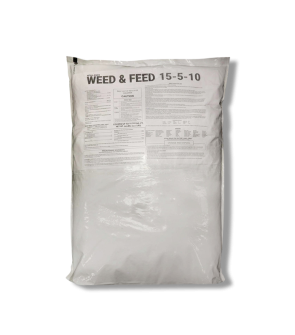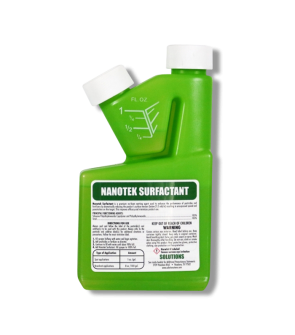Fleabane Control
Most Effective Products
Fleabane Control: How to Get Rid of Fleabane
This article is a general DIY guide for controlling fleabane in your lawn. Follow the recommended steps and products listed in this DIY guide and we guarantee 100% control of fleabane.
Fleabane is a summer annual weed that closely resembles daisy's and falls under the Aster family category. It is a plant that makes itself at home in poorly maintained lawns from the northern portion of the United States, and sometimes in the western half. Several other names this weed goes by is annual fleabane, common fleabane, daisy fleabane, and rough fleabane.
Fleabane can easily be mistaken as a beneficial plant due to its tiny daisy-like flowers, when in reality it is a broadleaf weed. This misconception further stems from the belief of how this weed received its name. Fleabane received its name from the superstition that when dried its aroma will repel fleas. While this myth holds some truth it also relevant for any pet owner to know that fleabane is poisonous to cats and dogs if ingested.
Beneficial to pollinators this wildflower is considered a broadleaf weed due to its ability to outcompete other plants in the area for water and space to grow. Fleabane have become especially problematic to homeowners as this weed is resistant to glyphosate, which is a widely used material in herbicides. In our DIY guide, you will learn how to remove and prevent fleabane in your property by following the recommended steps and products.
Identification
Before you can move forward with a treatment program, you will need to properly identify fleabane by knowing what it looks like. Careless misidentification can lead you to using the wrong herbicides, which can cost you time and money. Refer to the characteristics listed below to correctly identify fleabane.

- Fleabane resembles the flower daisy with its composite flower head, flat disk, and white coloration of petals. However, fleabane will have several rows of narrow ray-like petals whereas daisy's has a single layer.
- These flower heads begin as white and may turn to pink, or lavender colored over time. Some species have of fleabane have yellow or orange petals instead. Fleabane's ray shaped petals surround a bright yellow center that pollinators feed from.
- Stems and leaves of fleabane contain coarse stiff hairs. The leaves on the base of fleabane are shaped more lance-shaped with pointed tips and toothed edges. They can grow up to 5 inches in length, with newer, younger leaves growing shorter and more narrow.
- Young fleabane plants form a tight circular-shaped rosette cluster of oblong leaves that are light to medium green in coloration.
- Fleabane has a white-brownish colored fibrous root system that can develop into a taproot system if left for long periods of time.
Use the description and image above to help you properly identify fleabane on your property. If unsure, then contact us with a photo of your weed through email or in person at one of our stores to help you determine the weed and suggest treatment options.
Inspection
Once confirmed that you are dealing with fleabane, you can move on to inspection. During this phase, you will locate areas where fleabane is thriving and observe the conditions that are allowing it to thrive. This information will help you in knowing where to focus your herbicide application.

Where to Inspect
Fleabane thrives in soils containing consistent levels of moisture or nutrients, which is commonly found in lawns, crops, and edges of ditches.
Other sites it can be found in is within the cracks of driveways, sidewalks, near fences, and other locations that have full exposure to sunlight with moderately wet soil.
What to Look For
Although fleabane emerges in turfs from late spring to summer they usually bloom in May. The flowers of this weed forms into loose clusters at the top of its multiple branched stems. Its branches often grow taller than the main body of the plant.
While fleabane is a summer weed it can bloom to fall if conditions are ideal. There is no official dormancy for fleabane as it can sometimes be found year-round in lawns. It can be semi-dormant during the winter if there is not enough sunlight or heat.
Treatment
Before using any herbicide products, you will need to wear the appropriate personal protective equipment (PPE) such as gloves, mask, long-sleeve shirt, long-sleeve pants, safety goggles, apron or coveralls, Tyvek suit, and closed-toe shoes with socks.
Due to their glyphosate resistance, fleabane is best treated when young rather than when its mature (past 1 month) as it is more difficult to control.
We recommend using post-emergent herbicides containing 2,4-D, MCDA, picloram, dicamba, quinclorac, fluroxypyr, isoxaben or triclopyr on new or established fleabane infestations. Unfortunately, this weed will also need an adjustment in cultural methods to fully control.
Step 1: Prepare Post-Emergent Herbicide

Begin by calculating the square footage of the treatment area to determine how much herbicide material to use.
To find this, measure the length and width of the treatment area in feet and multiply (length X width = square footage). For acreage, take the square footage and divide it by one acre (square footage / 43,560 sq. ft. = acre).
To get rid of fleabane in cool-seasoned turf, we recommend 2,4-D Amine Selective Post-Emergent Herbicide. For spot treatments, apply 1/4 pint of product in 3 gallons of water.
To get rid of fleabane in warm-seasoned turf, it would be best to use Fahrenheit Herbicide. For spot applications, use 0.2 oz. of Fahrenheit Herbicide in 1 gallon of water per 1,000 sq. ft. To cover larger areas, apply 3 to 4 oz. of product in 20-80 gallons of water per acre.
For better penetration and success with fleabane a surfactant like Nanotek Surfactant can be used. Simply add 1 fl. oz. of Nanotek Surfactant per 1 gallon of solution.
To better control drift with either herbicide applications, you will need to use a handheld pump sprayer.
In the handheld pump sprayer, add half of the water, then the measured amount of product material, and pour in the remaining half of water. Close the sprayer tank lid and shake to ensure even agitation.
Step 2: Apply Herbicide to the Fleabane

Adjust the nozzle to a fan-spray setting to lightly coat the top and bottom of fleabane leaves until wet, but not to the point of run-off.
The ideal time to spray this product is during the early fall and early spring as this is when fleabane is weaker and beginning to grow.
Reapplication rates vary between 21-30 days with 2,4-D Amine Selective Post Emergent Herbicide applications.
Reapply Fahrenheit Herbicide when 4 to 6 weeks have passed after application.
Prevention
After you have successfully eliminated fleabane from your lawn, you will want to make sure this noxious weed does not return. Unfortunately, fleabane will need a combination of cultural methods and herbicide applications to completely remove it. Here are some preventative methods to follow to completely cease growing activity.

- Make sure you are mowing your turf when it reaches a height of 3 inches. This action will help to cease seed activity and growth.
- Rake the yard at least once a week during the fall and early spring to prevent seeds from reaching the soil. Fleabane is known for its prolific seeding and will quickly germinate within 2 to 4 weeks.
- Till the soil of undisturbed earth during the fall, spring, and summer to eliminate sites of growing activity.
- When weeds are under a height of 12 inches or has not reached a month in growth then you may hand-pull with a glove covered hand.
- To avoid resistance, rotate herbicide products with another herbicide solution containing a different active ingredient. Spot treat any weeds that emerge with 2,4-D Amine Selective Post-Emergent Herbicide or Fahrenheit Herbicide.
- Water once a week with an inch of irrigation during the early morning to lessen the amount of moisture in the soil.
- Apply Solutions 15-5-10 Weed & Feed Fertilizer with Trimec in the early spring to increase the rate of turf growth and fight against weeds like fleabane. Use 3.2 to 4.0 lbs of product per 1,000 sq. ft. of treatment area. Spread the product with a push or broadcast spreader by starting at the outer edge of the treatment area. Be sure to walk in an even space. Next, cover the space in the middle in one pass. Activate the granules with an inch of irrigation when 1 to 2 days have passed after application.
Key Takeaways
What is Fleabane?
- Fleabane is summer annual weed that is often confused with daisy's due to the tiny white flowers across the top of its stems.
How to Get Rid of Fleabane
- We recommend using a rotation of herbicide applications containing 2,4-D or MCDA to avoid fleabane from becoming resistant to the products being used. Products such as Fahrenheit Herbicide or 2,4-D Amine Selective Post Emergent Herbicide can be used to treat emerged fleabane.
Preventing Fleabane
- Fleabane can easily overtake grassy areas due to the numerous amount of seeds it produces, short germination period, and ability to resist certain herbicide products. The best way to prevent fleabane is to eliminate it when it is first observed on turf with the appropriate herbicide and thickening turf with Solutions 15-5-10 Weed & Feed Fertilizer with Trimec so it cannot grow easily.















































































































































































































































































































































































































































































































































